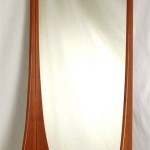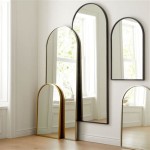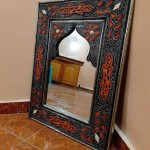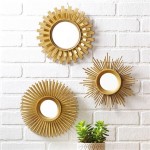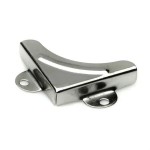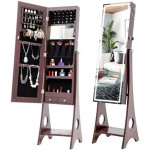Wall Mirror Dimensions: A Comprehensive Guide
Choosing the right wall mirror involves more than just selecting a style. Dimensions play a crucial role in how a mirror functions within a space, affecting both aesthetics and practicality. This guide explores the various aspects of wall mirror dimensions, offering insights into standard sizes, proportional considerations, and the impact of size on room perception.
Standard Wall Mirror Sizes
While custom sizes are always an option, understanding standard mirror dimensions provides a helpful starting point. Common rectangular mirror sizes often range from 24x36 inches for smaller spaces to 30x40 inches for larger areas. Square mirrors frequently come in sizes like 24x24 inches or 36x36 inches. Round mirrors are typically measured by diameter, with common sizes ranging from 12 inches to 36 inches or more. These standard sizes often align with common furniture dimensions, facilitating easier integration into existing décor.
Mirror Size and Room Proportions
The size of a mirror should be proportional to the wall space it occupies and the surrounding furniture. A large mirror on a small wall can overwhelm the space, while a small mirror on a large wall may appear insignificant. As a general guideline, a mirror should not exceed the width of the furniture piece it hangs above, such as a vanity or console table, by more than a few inches on either side. This maintains visual balance and prevents the mirror from dominating the area.
Mirror Height and Placement
The height at which a mirror is hung also influences its functionality and visual impact. For a bathroom vanity mirror, the center of the mirror should ideally be positioned at eye level for the average user. In hallways or entryways, mirrors are often hung slightly lower to provide a full-length view. When hanging a mirror above a piece of furniture, consider leaving a space of 6-8 inches between the top of the furniture and the bottom edge of the mirror. This allows for visual breathing room and prevents the mirror from feeling crowded.
Impact of Mirror Size on Room Perception
Large mirrors can create the illusion of more space, making a room appear larger and brighter. Strategically placed large mirrors can reflect natural light deeper into a room, enhancing its overall ambiance. Conversely, smaller mirrors can be used to create focal points or add decorative accents without significantly altering the perception of space. Understanding the relationship between mirror size and spatial perception allows for strategic use of mirrors to achieve desired design outcomes.
Mirror Dimensions for Specific Applications
Different applications call for different mirror dimensions. Full-length mirrors, typically around 72 inches tall, are essential for dressing areas and bedrooms. Smaller, decorative mirrors can be grouped together to create a gallery wall, adding visual interest and personality to a space. Oversized mirrors can serve as statement pieces in living rooms or dining areas, reflecting light and adding a touch of drama. Considering the intended use of a mirror helps guide the selection of appropriate dimensions.
Measuring for a Wall Mirror
Accurate measurement is crucial when selecting a wall mirror. Before purchasing a mirror, measure the wall space where it will be hung, taking into account any existing furniture or architectural features. If hanging a mirror above a mantelpiece or console table, measure the width of the furniture and use that as a guide for the maximum width of the mirror. For full-length mirrors, ensure there is sufficient vertical space to accommodate the mirror's height, allowing for comfortable viewing. Precise measurements prevent sizing issues and ensure a seamless integration of the mirror into the intended space.
Frame Size and Mirror Dimensions
The frame of a mirror also contributes to its overall dimensions. A wide, ornate frame can significantly increase the overall size of the mirror, requiring additional wall space. Conversely, a thin, minimalist frame adds less to the overall dimensions, allowing the reflective surface to take center stage. When considering mirror dimensions, factor in the frame size to ensure the final dimensions are appropriate for the intended location.

Alexander Wall Mirror Urban Ladder

How To Measure Your Space For A Large Wall Mirror 2 Steps

Wall Mirror Dimensions Floor Plans

How To Measure Your Space For A Large Wall Mirror 2 Steps

Seafuloy Round Wall Mirror Metal Frame Circle For Bedroom Bathroom Entryway Decor 32 In W X H Silver Ym Yj Sl32 The Home Depot

Laurynn Wall Mirror Urban Ladder

Rectangular Bathroom Mirrors Bevelled Designer Wall Mounted Aica Bathrooms

How To Measure Your Space For A Large Wall Mirror 2 Steps

Fresca Hudson 20 In W X 30 H Framed Wall Mirror Gray Finish Fmrhd0102gr The Home Depot

